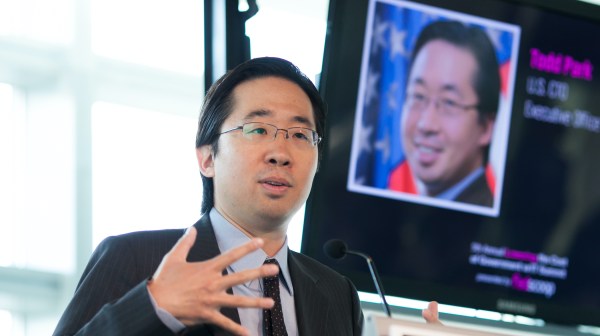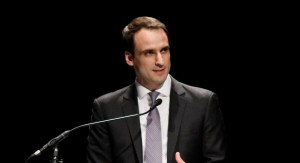With Federal Chief Technology Officer Aneesh Chopra announcing he will leave the White House, the talk now turns to who will fill his shoes.
For some clues, look no further than President Obama’s State of the Union address from Tuesday and the accompanying Blueprint for an America Built to Last that focuses on American innovation, entrepreneurship, jobs and technology, all areas Chopra played a key role in developing, and something his successor will surely do as well.
Peter Levin, Chief Technology Officer, Department of Veterans Affairs
 One of the most innovative thinkers in government, Levin and his team created the Blue Button initiative that lets veterans easily download and transfer their own medical data. Just last week, it was announced the Blue Button would be used by all the healthcare providers on the federal healthcare plan and a Green Button is being used by power companies in California to give users more detailed energy information. More “buttons” are in the works with Levin and his team lending their experience. Levin is one of the few people that can match Chopra when it comes to energy and passion.
One of the most innovative thinkers in government, Levin and his team created the Blue Button initiative that lets veterans easily download and transfer their own medical data. Just last week, it was announced the Blue Button would be used by all the healthcare providers on the federal healthcare plan and a Green Button is being used by power companies in California to give users more detailed energy information. More “buttons” are in the works with Levin and his team lending their experience. Levin is one of the few people that can match Chopra when it comes to energy and passion.
Todd Park, Chief Technology Officer, Department of Health and Human Services
 Park is looking to do with health data what NOAA did with weather data years ago. Park is freeing up the mountains of health information data to the public, who can then comb through to create applications and build communities to encourage new entrepreneurial opportunities. Like Chopra, Park is a key proponent of open government and innovation.
Park is looking to do with health data what NOAA did with weather data years ago. Park is freeing up the mountains of health information data to the public, who can then comb through to create applications and build communities to encourage new entrepreneurial opportunities. Like Chopra, Park is a key proponent of open government and innovation.
Regina Dugan, Director, DARPA
 DARPA is all about innovation and technology, and Dugan is in the thick of it. She is leading an aggressive innovation approach to cybersecurity, pushing for the agency to create more offensive weapons in cyberspace to negate potential adversaries before they touch their keyboard.
DARPA is all about innovation and technology, and Dugan is in the thick of it. She is leading an aggressive innovation approach to cybersecurity, pushing for the agency to create more offensive weapons in cyberspace to negate potential adversaries before they touch their keyboard.
Richard Spires, Chief Information Officer, Department of Homeland Security
 As head of the CIO Council Spires has been front-and-center with a number of major technology issues coming out of late, including FedRAMP. He’s also spear-heading a segment architecture leading to human capital transformation at Homeland Security to help the agency run more efficiently, along with focusing on initiatives like integrating program teams across the agency.
As head of the CIO Council Spires has been front-and-center with a number of major technology issues coming out of late, including FedRAMP. He’s also spear-heading a segment architecture leading to human capital transformation at Homeland Security to help the agency run more efficiently, along with focusing on initiatives like integrating program teams across the agency.





